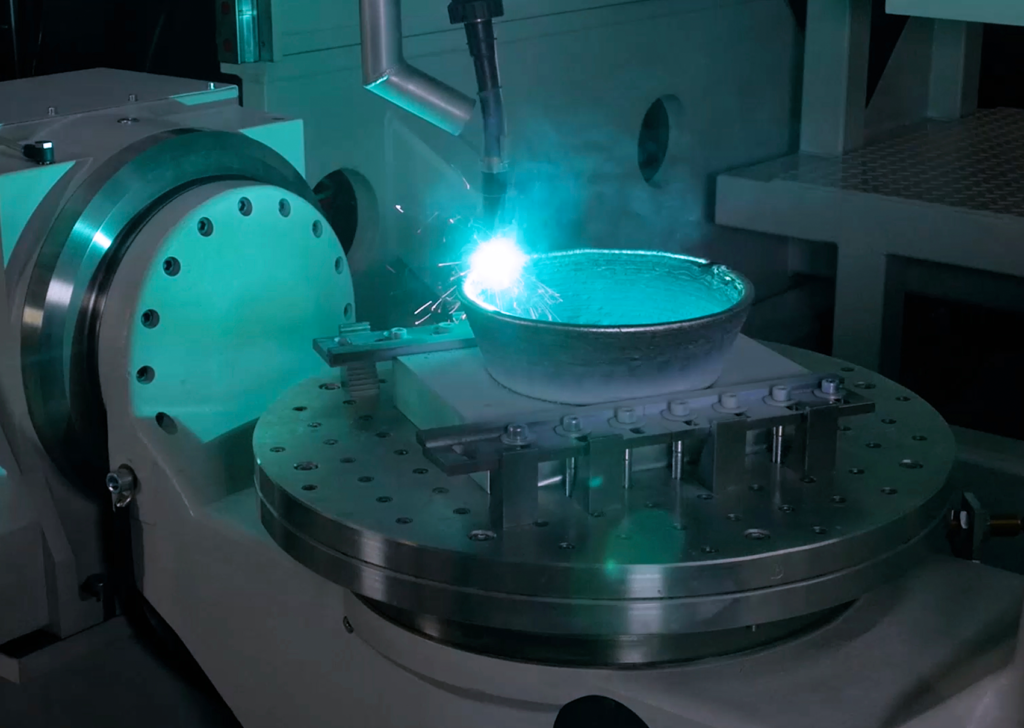GEFERTEC, the German developer and provider of 3DMP metal 3D printers and technology, is to deliver an industrial-scale arc403 machine to international aeronautics company Airbus.
Together with German private sector research organization the Bremen Institute for Applied Beam Technology (BIAS), Airbus is preparing the arc403’s 3DMP metal 3D printing process for use in the aerospace industry.
The advantages of 3DMP
3DMP is a wire-arc melting based metal additive manufacturing process capable of creating near-net-shape components.
The technique, according to GEFERTEC, promises to eradicate waste with “nearly 100% material utilization,” and cost savings of “up to 60% versus conventional manufacturing.”
In total, the company has four 3DMP machines in its portfolio:
– The arc603: a 3-axis machine capable of creating components up to 3 m³, with a maximum mass of 3000kg.
– The arc605: a 5-axis machine with a maximum capacity of up to 0.8 m³ and 500 kg mass.
– The arc405: 5-axis, 0.06 m³ capabilities and a maximum mass of 200 kg.
– And the arc403, the 3-axis machine which has just been installed by Airbus.
The process of producing a finished part with 3DMP follows 4 main steps: digital CAD/CAM design, manufacturing/3D printing, 3D scanning/metrology, and milling.

More eco-efficient flight
Airbus and BIAS’s arc403 3D printer has been provided by GEFERTEC as part of the Regis Project, under the German government’s Federal Aviation Research Programme (LuFo).
The purpose of LuFo is to support and help fund R&D efforts working toward more eco-efficient flight, following objectives set by the Advisory Council for Aviation Research and Innovation in Europe (ACARE) and the Flightpath 2050 vision set by the European Commission.
In the Regis Project, GEFERTEC’s 3DMP process will be qualified for production-level manufacturing in the aerospace industry by the year 2021.
The aerospace certification race
Other metal 3D printing technologies working for aerospace qualification include Norsk Titanium Rapid Plasma Deposition (RPD) method, which was used to make Boeing’s first structurally-supportive, additive-manufactured titanium part for a commercial airline. Though certified for installation aboard the 787 Dreamliner, the RPD 3D printed part was subject to a point design qualification from the Federal Aviation Administration (FAA), relating only to that part’s specific geometry. The next step would be to achieve certification for design allowables using the RPD process.
Also in partnership with Boeing, and most recently with Lufthansa MRO division Lufthansa Technik, Swiss-listed technology group Oerlikon, has been demonstrating its commitment to create additive manufacturing standards for the aerospace industry.
And, in Singapore, competing aerospace giants Airbus and Boeing have committed to integrate 3D printing into military aircraft maintenance.
To stay up to date with all the latest additive manufacturing in aerospace news, follow 3D Printing Industry on Twitter, and subscribe to our free additive manufacturing newsletter for regular digests.
Seeking a new job in 3D printing or looking to hire? Create a profile now on our 3D Printing Jobs site.
Featured image shows the GEFERTEC 3DMP additive manufacturing process. Photo via GEFERTEC



